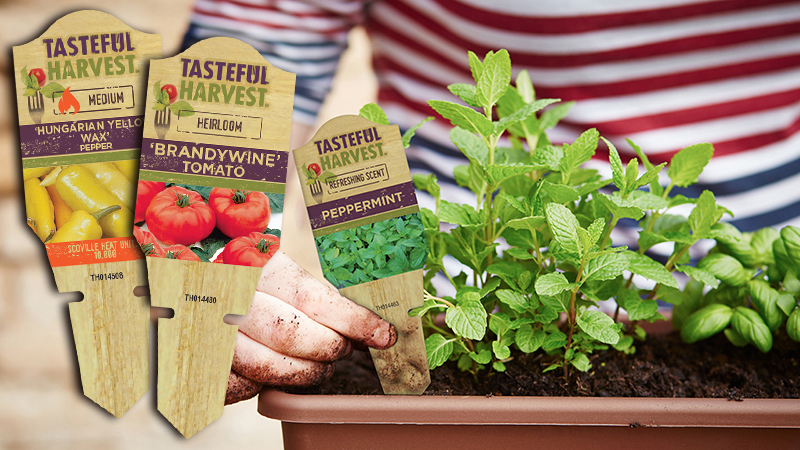2015 State Of The Industry: 2015 Brings More Debate On Pollinator Health, Pesticides And The Plants We Sell

Joe Bischoff
Last year was busy on the regulatory front for the horticulture industry. There were many comments, meetings and negotiations on topics such as the EPA’s Worker Protection Standards (WPS) and its proposed new definition of the Waters of the United States (WOTUS), USDA-APHIS’s modifications to the Greenhouse Certification Program (GCP), Round 2 of its Not Authorized Pending Pest Risk Analysis (NAPPRA) rules and its overhaul of the Plants for Planting Importation Regulations (Q-37) — all of which we expect to see final rules announced for sometime in 2015.
However, no regulatory-related issue has required more attention in 2014 than the pollinator health topic. That’s because while our legal access to pesticide tools rests with the regulatory agencies, this topic, especially as it relates to neonicotinoid insecticides, has expanded into the arena of public perception and the potential for regulation through retail.
Possible EPA-Proposed Label Changes On The Horizon
In the early months of 2015, expect several announcements from the EPA and the White House Pollinator Initiative, which is made up of more than 10 federal agencies and co-chaired by the EPA and USDA. We anticipate the EPA will propose significant label changes to foliar application insecticides (neonicotinoids and others) that would limit when and where many outdoor crops can be treated. These label changes will reflect the EPA’s interest in reducing the risk of acute toxicity to adult bees. The proposal will have a comment period, and we will encourage all to respond and share insights.
Our industry is not at risk of losing its access to the treatments but there will likely be some complications on the “when” and “where” front. We are working closely with EPA and the Association of American Pesticide Control Officials (AAPCO) to confirm that they recognize the very real pest and regulatory challenges we face and are working to find areas of common ground. We will keep you posted on this issue.
Conservation Reserve Program Lands Part Of The Pollinator Habitat Solution
The Administration has so far hinted at an interest in engaging with public gardens and public schools on developing pollinator gardens and education about the importance of native and managed pollinators. The USDA has kept most of its attention on research, but we do expect some follow-up from the USDA Forage Summit that was held in October. During those meetings, the case was clearly made for including suitable honeybee forage plants in seed mixes for the Conservation Reserve Program (CRP), which is administered by the USDA’s Natural Resources Conservation Service (NRCS).
The seed mixes would be inexpensive, provide huge expanses of clean forage lands to pollinators and the approach has been described as a game-changer by some beekeepers. However, NRCS has been hesitant to execute on the idea because some of the plants are non-native. The CRP lands are undoubtedly part of the solution here and considerable attention will be placed on this particular topic come 2015.
Pollinator-Related Research Focused On Potential Exposure Of Bees To Neonicotinoids
A little closer to home, AmericanHort’s research affiliate, the Horticultural Research Institute, intends to announce its funding plan for pollinator-related research during the MANTS show, which will be held in Baltimore, the second full week of January. We expect this research to be focused on answering questions regarding the potential for exposure of bees to neonicotinoids on garden and landscape plants, alternative practices development (where systemic pesticide use is required), bee attractiveness to the flowering plants regularly sold in our industry and surveys to better understand the health concerns of native pollinators in urban and suburban landscapes.
Staying with the research theme, we will be keeping a close eye on announcements from USDA-APHIS on its funding decisions for the Farm Bill section 10007. AmericanHort teamed up with the American Beekeeping Federation, the American Honey Producers Association, the American Seed Trade Association and Pollinator Partnership to be part of a project that would identify the best bee forage plant material that is readily available in the plant and seed industries. If funded, it would be the first time these groups got together to find forage and habitat solutions, in a very tangible way. We’re hoping for news sometime in late February.
Horticulture Will Better Define Its Role In Pollinator Health
Finally, the taskforce guiding the Horticulture Industry Pollinator Stewardship Initiative will be announcing its recommended practices and partnership suggestions early in the New Year. The taskforce has made considerable progress in recent months and some final details are expected to be worked out during a mid-December face-to-face meeting taking place at the AmericanHort offices in Washington D.C.
The horticulture industry won’t be without hurdles on this issue in 2015. However, through the taskforce and related efforts, we’ve built bridges with organizations that we had rarely engaged with before. We’re confident that through these collaborations, supporting of additional research and by applying what we’ve learned, our industry will be better positioned to directly respond to some of the doubts being fostered by activist organizations and better define our industry’s role in being part of the pollinator health solution.
More 2015 State Of The Industry articles:
Major Changes In Washington Reveal Need For Reform
American Floral Endowment: Laser-Focused On The Floriculture Industry’s Needs
Current Green Industry Trends
Growers And Suppliers Are Optimistic For A Strong Year In 2015
2015 State Of The Industry: Numbers At A Glance









